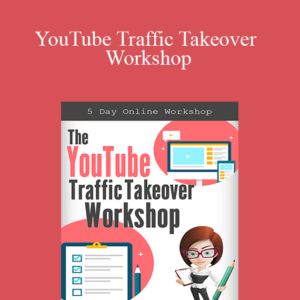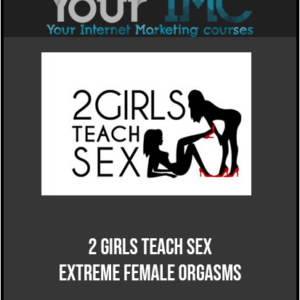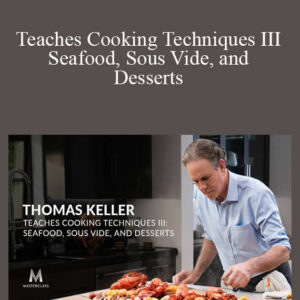Analysis and Critique: How to Engage and Write about Anything
Course Overview
For thousands of years, writing has been a powerful way for us to communicate with one another, to share our distinct thoughts and ideas through the power of words. Even in today’s technologically saturated 21st century, we still express ourselves in writing almost every single day. And oftentimes, we write to argue our viewpoints, persuade others that we’re right, and share our unique experiences and perspectives.
But all writing—whether it’s a powerful essay, a persuasive letter, a detailed business report, or an autobiographical story—is at its most effective and memorable when it’s built on the fundamental critical and analytical skills that transform your words from “good” writing to “great” writing. Regardless of your subject, your goal, or your occasion, these skills are the heart and soul of engaging and effective writing. They include the ability to
- organize your thoughts into a coherent piece that never leaves your reader behind;
- make a persuasive argument rooted in solid facts;
- draw on the styles and characteristics of various literary genres;
- make responsible use of research materials and outside resources; and
- avoid common grammatical errors that could cost you your credibility.
You’ll find the secrets to these and other concepts and methods for clear and strong writing in the 24 accessible and practical lectures of Analysis and Critique: How to Engage and Write about Anything. Delivered by Professor Dorsey Armstrong of Purdue University—whose work with students involves the art and craft of analytical and persuasive writing—this course immerses you in the elements of successful writing. With its engaging literary and everyday examples, inspirational prompts, and unforgettable insights, Analysis and Critique makes the perfect reference guide for both professional and casual writers.
Five Literary Genres, Endless Insights
One of the essential keys of effective writing: understanding literary genres and the ways their unique styles and characteristics can shape and inform your own voice. Professor Armstrong spends the first lectures of her course guiding you through the five major literary genres and the ways some of their most enduring examples can show you the path to stronger persuasive and critical writing.
- Fiction: By learning how to actively read a range of short stories and novels by authors including Jane Austen, Ernest Hemingway, Edgar Allan Poe, and Charlotte Perkins Gilman, you’ll strengthen your ability to understand how a writer creates his or her “voice,” and how a writer conveys particular information to his or her audience.
- Essay: Of all the literary genres, the essay is the richest resource for studying the characteristics of a powerfully written argument. You’ll discover how essays such as Jonathan Swift’s “A Modest Proposal” and Henry David Thoreau’s “Walden” demonstrate effective strategies for starting, organizing, supporting, and concluding your arguments.
- Poetry: Somewhat surprisingly, poetry has much to offer nonpoetic writers looking to strengthen their craft—especially its command and flexibility. In examining the work of poets such as William Carlos Williams, John Donne, and e. e. cummings, you’ll learn how to tap into the power of figurative language, careful word choices, and dramatic word ordering.
- Drama: Speeches, conference papers, and other writing intended for oral presentation offer their own set of challenges to everyday writers. By using selected excerpts by William Shakespeare, history’s greatest playwright, Professor Armstrong gives you invaluable tips for mastering the art of tone, timing, and delivery of writing meant to be spoken out loud.
- Autobiography: Writing that draws on your life to achieve a goal or enhance your credibility isn’t as daunting as it may seem. Detailed looks at excerpts from autobiographies by Benjamin Franklin, Frederick Douglass, and others offer helpful hints about how much personal information to include, how to take the most effective approach, and more.
Frequently, the lectures are enhanced with writing prompts and practice examples—such as rewriting a passage in five different styles or writing an idea from different narrative perspectives—designed to help you better understand how to use and apply the insights found in these five genres.
Explore the Fundamentals of Rhetoric
From there, Analysis and Critique turns to a series of lectures that focus on the art of rhetoric (the foundation of argumentation) and the ways it can help you adapt your writing to a variety of different situations. And make the most of them.
Rhetorical ideas are so deeply woven into the fabric of Western culture that it’s easy to miss out on opportunities to maximize their benefits in your writing. Knowing this, Professor Armstrong not only explains them thoroughly but also shows you how to use them regularly and systematically to make your writing stronger and more persuasive. Some of the most applicable rhetorical concepts you explore in this part of the course include
- deductive reasoning, a form of reasoning that moves from the knowledge you already have to the knowledge that has yet to be discovered and articulated;
- commonplaces, which are well-known words and phrases that can easily communicate your theme or topic to your audience; and
- pathos, which works to inspire emotion in your readers (particularly feelings of sympathy).
The increased awareness of classical rhetoric you gain from these particular lectures will go a long way to helping you become a stronger writer by calling your attention to the basics of compelling analytical writing. You may never use terms like “commonplaces” and “pathos” in your actual writing—but understanding how they work will enhance the importance of what you write and the way you write it.
Get a Step-by-Step Guide to the Writing Process
What about the act of writing itself, which can often be daunting to the most seasoned writer? You can be drafting a work presentation, a cover letter for a job application, an editorial for your local newspaper, or a persuasive letter for a public official—in any case, knowing how to approach the act itself can reap many rewards.
The final section of Analysis and Critique is a fascinating, step-by-step guide through the writing process. With her keen eye for providing helpful strategies and using real-world examples, Professor Armstrong provides answers to frequently asked questions about each of writing’s four major stages:
- Researching: How do you determine what your research goals are? Where should you look for reliable sources of information? How do you narrow your research focus?
- Writing a First Draft: How long does a productive brainstorming session last? Why is it OK to write a deliberately bad first draft? What are good ways to conquer writer’s block?
- Editing: How long should you wait before you start editing your writing? How can you tell when you’ve used too many quotations? What grammatical errors should you watch out for?
- Rewriting: What makes a rewrite different from an edit? What specifics should you pay attention to in rewriting? How do you recast supporting points to better fit your argument?
Writing Made Effective—and Fun
As a university professor with years of experience, the instructor of a general education writing course at Purdue University, and a distinguished editor, Professor Armstrong spends nearly every day in the company of writing—both good and bad. She knows which techniques work and which do not. She knows the common pitfalls, concerns, and fears that most writers have. And she knows just how important effective writing skills are in expressing yourself successfully to others.
But even more important than her experience working with writers and her knowledge of the craft is the way Professor Armstrong makes writing feel like a fun process of self-discovery. Her lectures are always engaging, always accessible, and always filled with information and takeaways that you can use any time you need to write.
So tap into the power of effective writing with Analysis and Critique, and learn what it’s like to have a masterful and supportive instructor standing right by your side as you learn the ways to write about practically anything.
Course Lecture Titles
24 Lectures
30 minutes / lecture
1. How to Write about Anything
What makes a particular piece of writing “good”? As you explore Professor Armstrong’s roadmap for the course, examine how a range of writing samples—including an essay by Virginia Woolf, poetry by Homer, and even a short note from a teenage girl to her mother—demonstrate essential aspects of effective writing.
2. How to Be an Effective Reader
Active, insightful reading skills are essential to any writer’s success. View the craft of writing from the reader’s perspective and train yourself to recognize nuanced moments and ideas in literary texts, including Moby-Dick and Le Morte Darthur, as well as the subtleties hidden within a practical set of driving directions.
3. How Literature Can Help
Investigate the dominant characteristics and conventions of five major genres of literature: prose, poetry, drama, essay, and autobiography. Then discover how, when used properly and with restraint, the distinct approaches of these genres can offer you a strong foundation and helpful inspiration for all sorts of writing projects.
4. Shaping Your Voice
Focus now on prose—the most common form of writing people engage with. Why is a writer’s voice such an important part of his or her work? How can you create a distinctive voice? What can authors like Hemingway, James, and Salinger teach you about the varieties of narrative styles?
5. Knowing Your Reader
A common danger for a writer is not respecting your audience. Learn how to avoid this pitfall by deducing the intended audience for Edgar Allan Poe’s “The Black Cat” and Charlotte Perkins Gilman’s “The Yellow Wallpaper,” and by closely reading student essays that miss, misjudge, or offend their intended readers.
6. The Art of the Essay—How to Start
Swift’s “A Modest Proposal” and Thoreau’s “Civil Disobedience” are two of the most famous argumentative essays in the Western literary tradition. Using their opening passages, examine why it’s so important that your opening argument be specific, be substantive, and pass what Professor Armstrong calls the “What?/So What?” test.
7. How to Organize an Argument
Continue unpacking “A Modest Proposal” and “Civil Disobedience” (along with Paine’s “Common Sense”)—this time to learn how to write an organized and effective argument. Once you’ve mastered this skill, you’ll be able to more effectively guide your readers, as well as avoid structural flaws that may distort your goals.
8. Supporting Your Argument
To write persuasively, you have to effectively explain your supporting evidence. Three skills you focus on in this lecture: explaining how a piece of evidence works in your favor; providing a direct connection between your evidence and your conclusion; and acknowledging the arguments of others to strengthen your own.
9. Finishing Strong
Enhance the way you finish essays with three key strategies. A “negative consequences” conclusion underscores the negative things that can happen if readers fail to support your argument. A “no viable alternatives” strategy suggests that alternatives to your proposal aren’t likely to work. And the “positive consequences” strategy emphasizes new possibilities.
10. The Uses of Poetry
How can poetry help you write better, even when you’re not writing poems? Here, Professor Armstrong uses poems to show that how you arrange your words can have as much of an impact as what they say. Also, delve deeper into the importance of tone and poetic devices like metaphors and similes.
11. Poetic Diction and Syntax
Continue your exploration of poetry and the ways it can enliven and strengthen writing. With the aid of poems by Gerard Manley Hopkins, Lewis Carroll, and e. e. cummings, grasp how specific words (with their literal and associated meanings) can make your writing more engaging—especially when they are used in an unconventional order.
12. Drama—Writing Out Loud
With Shakespeare’s help, discover how to tap into drama’s potential to transform you into a stronger, more confident “out loud” writer. Approaching your writing as something to be read out loud can, unlike other literary genres, clue you in to awkward turns of phrase, extremely long sentences, and other potential writing pitfalls.
13. What You Can Learn from Autobiography
Analyze excerpts from Benjamin Franklin’s autobiography for strategies to use when you are called to write about yourself. These include confining personal information to the areas of your interests, abilities, and achievements; striking a balance between self-promotion and association with others; and presenting your failures as a part of your personal development.
14. Writing and Leadership
Autobiographies are rich sources of knowledge for understanding how leadership styles and skills are developed and honed. Explore the crucial link between autobiographical writing and leadership with the aid of both Franklin and Frederick Douglass. Also, look closely at the potential benefits of using selective emotional expression in your autobiographical writing.
15. The Rules of Rhetoric
In the first of three lectures on using classical rhetoric to fashion your identity as a writer, investigate four widely used rhetorical concepts. These include commonplaces (pieces of truth wrapped in easily recognizable language), stasis (the general agreement between opposing parties about the terms of the argument), and deductive reasoning.
16. Invention and Arrangement
Turn to two broader areas of classical rhetoric: invention and arrangement. Invention refers to the process by which you generate your arguments. Arrangement refers to the way your argument is organized. Both, as you’ll learn, center on seizing opportunities to write the right thing, in the right way, at the right time.
17. Ethos and Pathos
Finish building your rhetorical tool kit by looking at ethos (the perception readers have of your reliability) and pathos (the feelings of emotion you inspire in your readers). Using literary and everyday examples, Professor Armstrong demonstrates how the best persuasive writing—whether it’s a speech or a job application—strikes a balance between the two.
18. Finding What You Need
One practical concern of writing is research. Where do you begin? How do you build an effective research schedule? What are some clues that online sources are reliable? And at what point should you stop researching and start writing? Learn the answers to these and other questions in this lecture.
Get download TTC, Dorsey Armstrong – Analysis and Critique: How to Engage and Write about Anything at coursesblock.com right now!
Delivery Method
– After your purchase, you’ll see a View your orders link which goes to the Downloads page. Here, you can download all the files associated with your order.
– Downloads are available once your payment is confirmed, we’ll also send you a download notification email separate from any transaction notification emails you receive from coursesblock.com
– Since it is a digital copy, our suggestion is to download and save it to your hard drive. In case the link is broken for any reason, please contact us and we will resend the new download link.
– If you cannot find the download link, please don’t worry about that. We will update and notify you as soon as possible at 8:00 AM – 8:00 PM (UTC 8).
Thank You For Shopping With Us!







